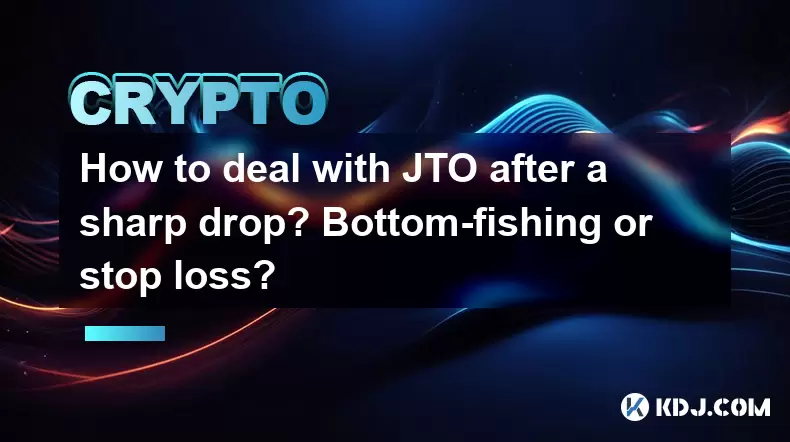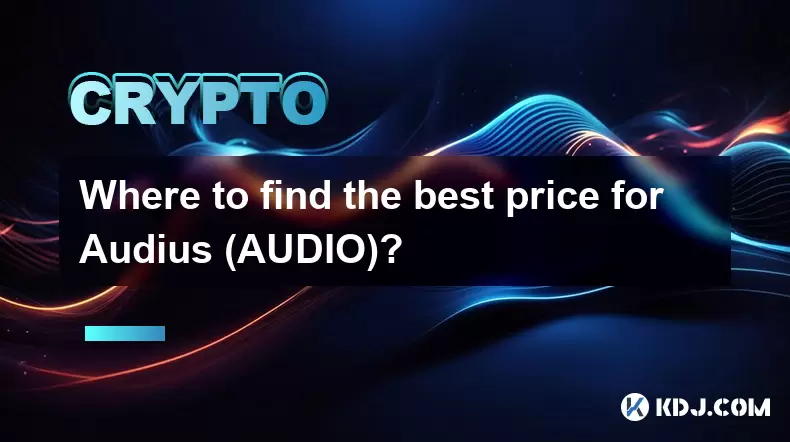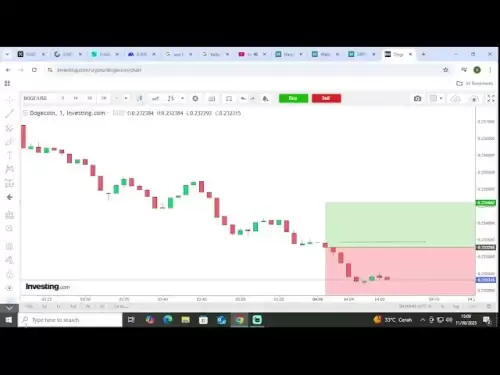-
 Bitcoin
Bitcoin $120300
1.41% -
 Ethereum
Ethereum $4296
2.75% -
 XRP
XRP $3.220
1.46% -
 Tether USDt
Tether USDt $0.9997
-0.04% -
 BNB
BNB $801.6
0.14% -
 Solana
Solana $179.9
0.22% -
 USDC
USDC $0.9998
-0.01% -
 Dogecoin
Dogecoin $0.2302
-0.24% -
 TRON
TRON $0.3405
-0.39% -
 Cardano
Cardano $0.7965
0.53% -
 Hyperliquid
Hyperliquid $44.80
2.57% -
 Chainlink
Chainlink $21.95
2.94% -
 Stellar
Stellar $0.4438
1.68% -
 Sui
Sui $3.767
-1.42% -
 Bitcoin Cash
Bitcoin Cash $584.4
3.24% -
 Hedera
Hedera $0.2554
-0.59% -
 Ethena USDe
Ethena USDe $1.001
-0.02% -
 Avalanche
Avalanche $23.57
0.00% -
 Litecoin
Litecoin $126.6
4.64% -
 Toncoin
Toncoin $3.339
0.94% -
 UNUS SED LEO
UNUS SED LEO $9.001
-0.49% -
 Shiba Inu
Shiba Inu $0.00001320
-0.92% -
 Uniswap
Uniswap $10.84
3.36% -
 Polkadot
Polkadot $3.945
-1.39% -
 Cronos
Cronos $0.1663
4.77% -
 Ethena
Ethena $0.8136
8.48% -
 Dai
Dai $0.0000
0.00% -
 Bitget Token
Bitget Token $4.391
-0.51% -
 Monero
Monero $268.0
0.80% -
 Pepe
Pepe $0.00001169
-1.57%
How to deal with JTO after a sharp drop? Bottom-fishing or stop loss?
When JTO's price drops sharply, investors must decide between bottom-fishing for potential gains or using a stop loss to limit losses, based on market analysis and risk tolerance.
May 07, 2025 at 05:15 pm

When dealing with JTO (Jito) after a sharp drop, investors often face a critical decision: should they engage in bottom-fishing, hoping to buy at a lower price and benefit from a potential rebound, or should they implement a stop loss to minimize further losses? This article will explore both strategies in detail, providing insights and practical steps to help you make an informed decision.
Understanding JTO and Market Dynamics
JTO, or Jito, is a cryptocurrency that has gained attention in the crypto market due to its unique features and potential for growth. Like any other cryptocurrency, JTO is subject to market volatility, which can lead to sharp drops in its value. Understanding the factors that contribute to these drops is crucial for making informed investment decisions.
Market dynamics such as trading volume, investor sentiment, and broader economic conditions can significantly impact JTO's price. A sharp drop in JTO's value could be triggered by various factors, including negative news, regulatory changes, or shifts in investor confidence. Recognizing these triggers can help you anticipate and respond to price movements more effectively.
The Case for Bottom-Fishing
Bottom-fishing involves buying an asset after a significant price drop, with the expectation that the price will eventually recover. This strategy can be lucrative if executed correctly, but it also carries substantial risks.
To engage in bottom-fishing with JTO, you need to assess whether the drop is a temporary dip or a sign of a more prolonged downturn. Analyzing historical price data, market trends, and the overall sentiment towards JTO can provide valuable insights. If you believe that the drop is temporary and that JTO has strong fundamentals, bottom-fishing might be a viable strategy.
Here are some steps to consider when bottom-fishing with JTO:
- Monitor the Market: Keep a close eye on JTO's price movements and trading volume. Look for signs of stabilization or a potential reversal.
- Conduct Research: Analyze JTO's fundamentals, including its technology, team, and market position. Ensure that the project has a solid foundation and potential for growth.
- Set a Target Price: Determine a target price at which you believe JTO is undervalued and represents a good buying opportunity.
- Diversify Your Portfolio: Avoid putting all your funds into JTO. Diversify your investments to mitigate risk.
- Be Patient: Bottom-fishing requires patience. Be prepared to hold your position for an extended period until the price recovers.
The Case for Implementing a Stop Loss
Implementing a stop loss is a risk management strategy designed to limit potential losses. By setting a stop loss order, you can automatically sell JTO if its price falls to a predetermined level, helping you avoid further declines.
A stop loss can be particularly useful during sharp drops, as it allows you to exit your position before the situation worsens. However, setting the right stop loss level is crucial to avoid being stopped out prematurely due to normal market fluctuations.
Here are the steps to implement a stop loss for JTO:
- Determine Your Risk Tolerance: Assess how much loss you are willing to accept before exiting your position.
- Set the Stop Loss Level: Based on your risk tolerance, set a stop loss level that is below the current price but not so close that it triggers during normal market volatility.
- Monitor and Adjust: Regularly review your stop loss level and adjust it as necessary based on JTO's price movements and your investment strategy.
- Use a Trailing Stop Loss: Consider using a trailing stop loss, which adjusts automatically as the price moves in your favor, allowing you to lock in profits while still protecting against downturns.
Evaluating the Pros and Cons of Each Strategy
Both bottom-fishing and implementing a stop loss have their advantages and disadvantages. Bottom-fishing can lead to significant gains if the price rebounds, but it also carries the risk of further declines if the drop is part of a more extended bear market. On the other hand, implementing a stop loss can protect your capital from significant losses, but it may also result in selling JTO prematurely if the price quickly recovers after hitting your stop loss level.
To make the best decision, consider your investment goals, risk tolerance, and the specific circumstances surrounding JTO's price drop. If you have a long-term investment horizon and believe in JTO's potential, bottom-fishing might be more suitable. Conversely, if you are more risk-averse and want to protect your capital, implementing a stop loss could be the better choice.
Practical Tips for Decision-Making
When deciding between bottom-fishing and implementing a stop loss for JTO, consider the following practical tips:
- Stay Informed: Keep up-to-date with the latest news and developments related to JTO. Understanding the reasons behind the price drop can help you make a more informed decision.
- Use Technical Analysis: Utilize technical analysis tools to identify potential support and resistance levels for JTO. This can help you determine whether the current price represents a good buying opportunity or if it's likely to continue falling.
- Consult with Experts: Seek advice from experienced crypto traders and analysts. Their insights can provide valuable perspectives on JTO's future price movements.
- Review Your Strategy Regularly: The crypto market is highly dynamic, and what works today may not work tomorrow. Regularly review your investment strategy and be prepared to adjust it based on new information and market conditions.
Frequently Asked Questions
Q: How can I determine if a sharp drop in JTO's price is temporary or part of a longer-term trend?
A: To determine whether a sharp drop in JTO's price is temporary or part of a longer-term trend, you should analyze several factors. Look at the trading volume during the drop; a high volume could indicate a significant shift in investor sentiment. Additionally, review any recent news or developments related to JTO that might have triggered the drop. Finally, consider the broader market conditions and the performance of other cryptocurrencies. If the drop is isolated to JTO and not part of a broader market downturn, it might be more likely to be temporary.
Q: What are some common mistakes to avoid when bottom-fishing with JTO?
A: Common mistakes to avoid when bottom-fishing with JTO include buying too early before the price has stabilized, investing more than you can afford to lose, and failing to diversify your portfolio. Additionally, avoid chasing the price down by continuously lowering your target price, as this can lead to significant losses if the price continues to decline.
Q: Can I use both bottom-fishing and stop loss strategies simultaneously with JTO?
A: Yes, you can use both bottom-fishing and stop loss strategies simultaneously with JTO. This approach is known as a "buy-and-hold with a stop loss." You can buy JTO at what you believe is a bottom price and set a stop loss to protect against further declines. This way, you can potentially benefit from a price rebound while limiting your downside risk.
Q: How does the overall market sentiment affect the decision to bottom-fish or implement a stop loss with JTO?
A: The overall market sentiment plays a crucial role in deciding whether to bottom-fish or implement a stop loss with JTO. If the market sentiment is generally positive and there is optimism about the future of cryptocurrencies, bottom-fishing might be more appealing, as the likelihood of a price rebound is higher. Conversely, if the market sentiment is negative and there are concerns about a broader market downturn, implementing a stop loss to protect your investment might be more prudent.
Disclaimer:info@kdj.com
The information provided is not trading advice. kdj.com does not assume any responsibility for any investments made based on the information provided in this article. Cryptocurrencies are highly volatile and it is highly recommended that you invest with caution after thorough research!
If you believe that the content used on this website infringes your copyright, please contact us immediately (info@kdj.com) and we will delete it promptly.
- DYDX Price Stays Afloat: Navigating Neutral Momentum with Technical Indicators
- 2025-08-11 20:50:12
- Superman Takes Flight: A Deep Dive into the Comic Program and Coin Medals
- 2025-08-11 20:30:12
- JasmyCoin's Bullish Momentum: Riding the Daily Gain Wave
- 2025-08-11 21:10:12
- Shiba Inu's Comeback Trail and the Meme Coin Mania: Can $SHIB Deliver a 12,000x Return?
- 2025-08-11 18:30:11
- Proof of Trust, Transparency, and User Safety: Keeping Crypto Real
- 2025-08-11 18:50:12
- Pudgy Penguins, Bitcoin Penguins, and the $22M Meme Coin Mania: A New York Perspective
- 2025-08-11 17:10:11
Related knowledge

How to purchase Aragon (ANT)?
Aug 09,2025 at 11:56pm
Understanding Aragon (ANT) and Its PurposeAragon (ANT) is a decentralized governance token that powers the Aragon Network, a platform built on the Eth...

Where to trade Band Protocol (BAND)?
Aug 10,2025 at 11:36pm
Understanding the Role of Private Keys in Cryptocurrency WalletsIn the world of cryptocurrency, a private key is one of the most critical components o...

What is the most secure way to buy Ocean Protocol (OCEAN)?
Aug 10,2025 at 01:01pm
Understanding Ocean Protocol (OCEAN) and Its EcosystemOcean Protocol (OCEAN) is a decentralized data exchange platform built on blockchain technology,...

Where can I buy UMA (UMA)?
Aug 07,2025 at 06:42pm
Understanding UMA and Its Role in Decentralized FinanceUMA (Universal Market Access) is an Ethereum-based decentralized finance (DeFi) protocol design...

How to buy Storj (STORJ) tokens?
Aug 09,2025 at 07:28am
Understanding Storj (STORJ) and Its Role in Decentralized StorageStorj is a decentralized cloud storage platform that leverages blockchain technology ...

Where to find the best price for Audius (AUDIO)?
Aug 11,2025 at 04:01pm
Understanding the Basics of Ethereum StakingEthereum staking refers to the process of locking up ETH tokens to support the security and operations of ...

How to purchase Aragon (ANT)?
Aug 09,2025 at 11:56pm
Understanding Aragon (ANT) and Its PurposeAragon (ANT) is a decentralized governance token that powers the Aragon Network, a platform built on the Eth...

Where to trade Band Protocol (BAND)?
Aug 10,2025 at 11:36pm
Understanding the Role of Private Keys in Cryptocurrency WalletsIn the world of cryptocurrency, a private key is one of the most critical components o...

What is the most secure way to buy Ocean Protocol (OCEAN)?
Aug 10,2025 at 01:01pm
Understanding Ocean Protocol (OCEAN) and Its EcosystemOcean Protocol (OCEAN) is a decentralized data exchange platform built on blockchain technology,...

Where can I buy UMA (UMA)?
Aug 07,2025 at 06:42pm
Understanding UMA and Its Role in Decentralized FinanceUMA (Universal Market Access) is an Ethereum-based decentralized finance (DeFi) protocol design...

How to buy Storj (STORJ) tokens?
Aug 09,2025 at 07:28am
Understanding Storj (STORJ) and Its Role in Decentralized StorageStorj is a decentralized cloud storage platform that leverages blockchain technology ...

Where to find the best price for Audius (AUDIO)?
Aug 11,2025 at 04:01pm
Understanding the Basics of Ethereum StakingEthereum staking refers to the process of locking up ETH tokens to support the security and operations of ...
See all articles

























































































